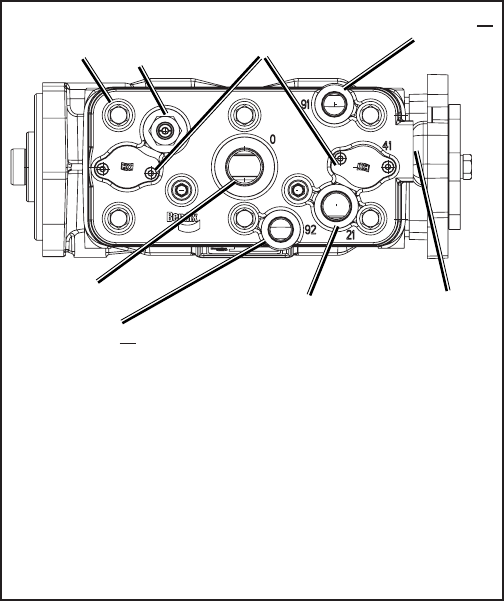Technical data

4
A supply of clean air is one of the single most important
factors in compressor preventive maintenance. Since the
BA-922
®
compressor receives supply air from the engine
air filter, periodic maintenance of the engine air filter is
necessary.
Inspect the compressor intake adapter, and the connecting
hoses each time engine air cleaner maintenance is
performed.
1. Inspect the intake hose adapters for physical damage.
Make certain to check the adapters at both ends of the
intake hose or tubing.
2. Inspect the intake hose clamps and tighten them if
needed.
3. Inspect the intake hose or line for signs of drying,
cracking, chafing and ruptures and replace it as
necessary.
COMPRESSOR COOLING
Inspect the compressor discharge port, inlet cavity and
discharge line for evidence of restrictions and carbon
build-up. If more than 1/16" of carbon is found, thoroughly
clean or replace the affected parts. Since carbon buildup
generally indicates inadequate cooling, closely inspect the
compressor cooling system. Check all compressor coolant
lines for kinks and restrictions to flow. Minimum coolant
line size is 3/8" I.D. Check coolant lines for internal clogging
from rust scale. If coolant lines appear suspicious, check
the coolant flow and compare to the tabulated technical
data in the back of this manual. Carefully inspect the air
induction system for restrictions.
LUBRICATION
Check the external oil supply line for kinks, bends, or
restrictions to flow.
Supply lines must be a minimum of 3/16"
I.D.
Refer to the tabulated technical data in the back of this
manual for oil pressure minimum values.
Check the exterior of the compressor for the presence of
oil seepage and refer to the TROUBLESHOOTING section
for appropriate tests and corrective action.
OIL PASSING
All reciprocating compressors pass a minimal amount of
oil. Air dyers will remove the majority of oil before it can
enter the air brake system. For particularly oil sensitive
systems, the Bendix
®
PuraGuard
®
system filter can be used
in conjunction with a Bendix air dryer.
If compressor oil passing is suspected, refer to the
TROUBLESHOOTING section and TABLE A for the
symptoms and corrective action to be taken. In addition,
Bendix has developed the “Bendix Air System Inspection
Cup” or BASIC kit to help substantiate suspected excessive
oil passing. The steps to be followed when using the
BASIC kit are presented in APPENDIX A at the end of the
TROUBLESHOOTING section.
COMPRESSOR DRIVE
Check for noisy compressor operation, which could indicate
excessive drive component wear. Adjust and/or replace
as necessary. Check all compressor mounting bolts and
retighten evenly if necessary. Check for leakage and
proper unloader mechanism operation. Repair or replace
parts as necessary.
COMPRESSOR UNLOADER & GOVERNOR
Test and inspect the compressor and governor unloader
system for proper operation and pressure setting.
1. Check for leakage at the unloader port. Replace leaking
or worn o-ring.
2. Make certain the unloader system lines are connected
as illustrated in Figure 3.
3. Cycle the compressor through the loaded and unloaded
cycle several times. Make certain that the governor cuts
in (compressor resumes compressing air) at a minimum
of 105 psi (cut-out should be approximately 15-20 psi
greater than cut-in pressure). Adjust or replace the
governor as required.
4. Note that the compressor cycles to the loaded and
unloaded conditions promptly. If prompt action is not
noted, repair or replace the governor and/or repair the
compressor unloader.
FIGURE 8 - TYPICAL BA-922
®
COMPRESSOR CYLINDER
HEAD
CYLINDER HEAD PORT IDENTIFICATION
The cylinder head connection ports are identified with cast
in numerals as follows:
Atmospheric AIR IN 0
Compressed AIR OUT 21
Coolant IN or OUT 91 and 92
Governor Control 41
(Compressors with no signal line to the unloader port should
have a vent installed in the port rather than a plug.)
Coolant In or
Out
Governor
Connection
Discharge
Safety Valve
Discharge
Port
Inlet Port
Unloader
Covers
Coolant In or Out
Head
Bolt (6)










